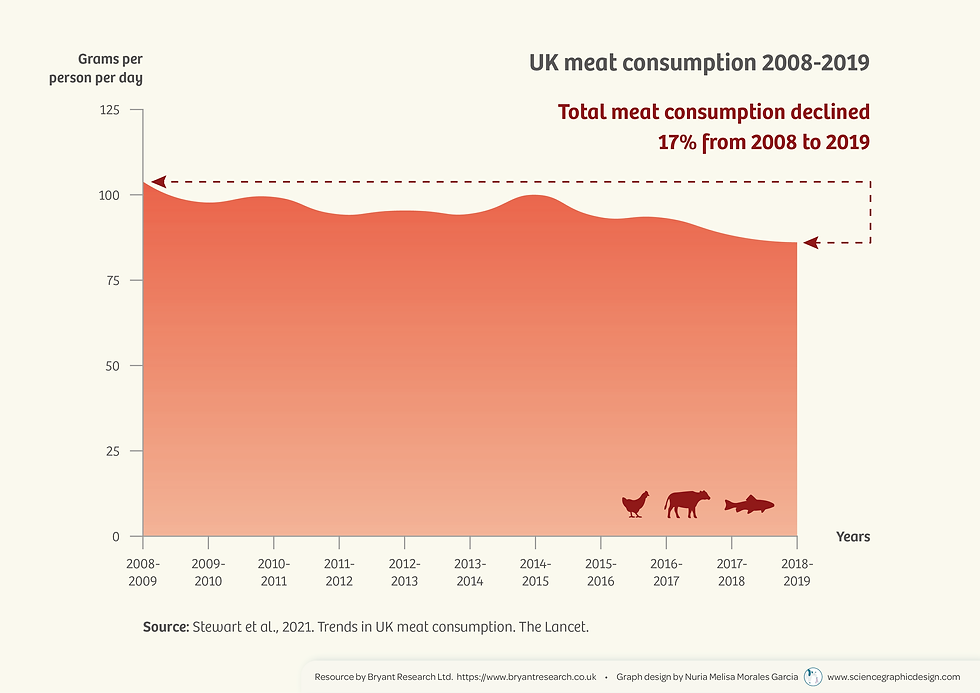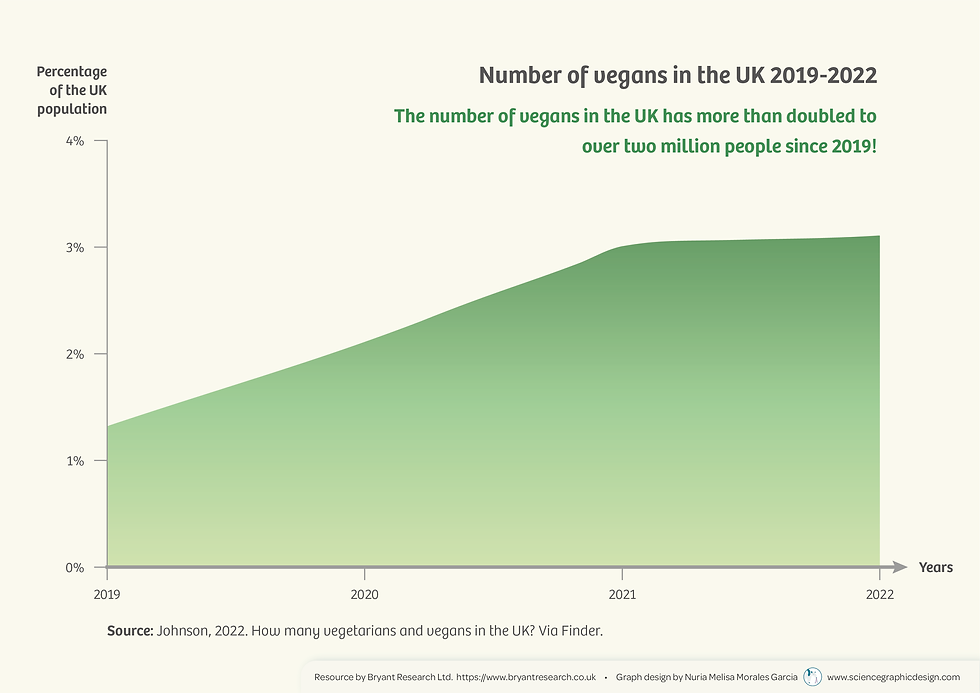Cultivated Meat: An Idea Whose Time Has Come
- bethchampion
- Jul 5, 2022
- 3 min read

One of my favourite things to watch is TV items about the internet from the 1990s. It is often abundantly clear that the TV presenters – and the public – could not comprehend the scale and pace of change that this technology would bring. At the time, it would have been a rather peculiar person to get excited about the idea of a worldwide network of computers. Today, anybody under the age of 25 can scarcely imagine a world without the internet. This is the power of an idea whose time has come.
As we stood in the 1990s on the precipice of a drastic change in the way we communicate, today we stand on the precipice of a drastic change in the way we eat meat. Not only has cultivated meat technology advanced rapidly over the last decade, but data from consumers increasingly indicates that the public is ready. In this post, I will explore the consumer trends that have set the table for cultivated meat.
Developed countries are moving away from animal meat
Worldwide, meat consumption has been rising steadily since the 1960s. Rising incomes in the developing world mean that this global trend is likely to continue. But in many developed countries, we have already seen meat consumption beginning to decline.
Take the UK, for example. In the 10 years to 2019, meat consumption fell 17%, while sales of meat alternatives more than doubled over the same period. From 2019 to 2022, the number of vegans in the UK increased by 138% to over 2 million.
Meanwhile, in Germany, meat production decreased 4% from 2019 to 2020, while meat alternative production was up 39%. A 2020 survey found that, when there was a ‘flexitarian’ option given, fewer than 50% of Germans identified as meat-eaters. In 2021, the German meat producer Rügenwalder Mühle saw sales of their vegetarian and vegan products outpace meat sales for the first time.


However, despite the surge in plant-based diets, including the rapid adoption of plant-based meats, some people just don’t want to give up meat. For these meat-lovers, meat cultivated from animal cells could be the replacement they are waiting for.
The unique appeal of cultivated meat
One of the common questions I hear about cultivated meat is… ‘Do we really need it?’ People asking such questions have a point – plant-based meat alternatives are increasingly convincing, and they are only getting better. Is there room in the market for cultivated meat?
It looks like the answer is ‘Yes!’ Market research shows that, while an increasing number of people are satisfied with plant-based meat alternatives, this market only partially overlaps with the market for cultivated meat. As this survey data from Belgium shows, 22% said they would be happy with either plant-based or cultivated meat, but 44% (in the yellow-highlighted cells) are keen on one or the other, but not both.
| Would not buy cultured meat | Maybe would buy cultured meat | Would buy cultured meat |
Plant-based meats not meet their needs | 11.4% | 9.5% | 9.7% |
Plant-based meats maybe meet their needs | 5.3% | 8.8% | 7.8% |
Plant-based meats meet their needs | 9.6% | 16.1% | 21.7% |
Moreover, when we break down consumers by their current meat consumption, we see that, unlike plant-based meat, cultivated meat acceptance is highest among those with the meatiest diets. This means that cultivated meat could be what is needed to appeal to meat-lovers who have not been swayed by plant-based replacements.
Signs of increasing familiarity & acceptance
There are also signs of public attitudes towards cultivated meat improving over time. In 2012, YouGov UK reported that just 19% of the UK said they would eat cultivated meat. In 2022, the UK’s Food Standards Agency reported that 30% said they would eat it. This suggests that people are becoming more comfortable with the idea of eating cultivated meat.
Moreover, the FSA survey found that 78% of people said they had heard of cultivated meat, a significant increase compared to previous research, which has tended to find that most people had never heard of it. This is important, because familiarity is one of the biggest predictors of cultivated meat acceptance – people like what they know.
—
Consumers in developed countries are trending away from animal products and towards alternatives. While not everybody is sold on the existing alternatives, there is reason to think that cultivated meat is a promising way to cut meat consumption, especially among heavier meat-eaters. There are some signs that public acceptance of cultivated meat is increasing over time with greater familiarity. Through WhatIsCultivatedMeat.com, the Educated Choices Program is providing a great resource that can increase public knowledge about cultivated meat, which in time, is likely to increase the number of people choosing to put it on their plates.
- Chris Bryant, PhD
Director, Bryant Research
Sources and further reading:
https://www.thelancet.com/journals/lanplh/article/PIIS2542-5196(21)00228-X/fulltext
https://www.dw.com/en/germany-produced-less-meat-more-vegan-alternatives-in-2020/a-57527678
https://www.sciencedirect.com/science/article/pii/S0195666321000696
https://www.frontiersin.org/articles/10.3389/fsufs.2019.00011/full
https://yougov.co.uk/topics/consumer/articles-reports/2012/03/12/would-you-eat-artifical-meat









Comments